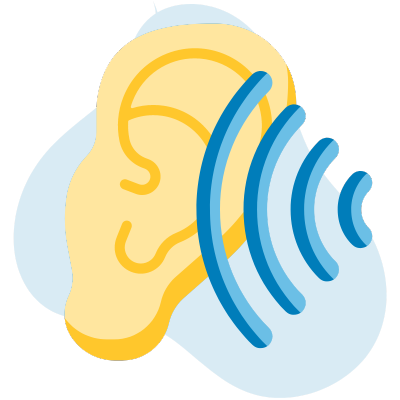Overview
Distracted driving is any activity that takes your attention away from driving and impacts your ability to respond to changes in the driving environment.
There are four types of distraction:
| Type of distraction | Definition | Example |
|---|---|---|
|
Auditory 
|
Paying attention to auditory signals rather than the road. |
|
|
Cognitive 
|
Doing something that requires mental effort to be diverted from the task of driving. |
|
|
Manual 
|
Doing something that requires the driver to take their hand/s off the steering wheel. |
|
|
Visual 
|
Where a task requires the driver to look away from the road. |
|
Why is it important to avoid driver distraction?
Passenger transport drivers are often exposed to distracting situations – a few seconds of inattention could have significant consequences.

If you glance away from the road for just 2 seconds while driving at 60 kilometres per hour, you miss 33 metres of the road. You miss 55 metres of the road if you’re driving at 100 kilometres per hour.

The Road Safety Commission reported that in 2020, 20 fatalities were the result of inattention-related vehicle crashes.
Inattention-related crashes resulted in 524 people being killed or seriously injured between 2016 and 2020.
Mobile phone usage while driving
In WA, illegal mobile phone usage while driving can lead to penalties of up to $1,000 and four demerit points.
Rules for all WA drivers
WA drivers can only touch a mobile phone to make, receive and terminate calls if the phone is secured in a cradle mounted to the vehicle.
If the phone is not secured in a cradle, you can only receive or terminate calls without touching the phone. For example, using:
- voice commands;
- a Bluetooth hands-free car kit;
- an earpiece; or
- a headset.
It is illegal for all drivers to create, send or look at a text message, video message, email or similar – even if the phone is mounted in a cradle or can be operating without touching it.
Special conditions for passenger transport drivers
Passenger transport drivers are permitted to touch their phone to accept or reject a trip only if:
- the phone is securely mounted in a cradle;
- they are not driving in a school zone during school hours;
- they are not driving on a freeway;
- they are not driving on a road with a speed limit of 80km/h or more; and
- they are not driving past an emergency response vehicle during a 40km/h slow down situation.
Tips to reduce driver distraction
- Always stay alert and aware of your surroundings when driving and stationary.
- Maintain concentration on the road when searching for passengers.
- Make sure any equipment that is required for your trip (like navigation devices, meters or booking apps) is set up and working before you start driving.
- Avoid having private phone conversations while driving, and don’t use your phone to send text messages or check social media.
- If a passenger’s behaviour is distracting, it may be unsafe to continue the trip. You should stop the vehicle in a safe location as soon as possible.
Things to consider when creating driver distraction procedures
- Do your drivers understand the laws that apply in WA around mobile phone use while driving?
- Have you provided driver training or educational resources regarding driver distraction?
- How do you monitor drivers’ use of electronic devices while the vehicle is operational?
- Do you have procedures in place for passengers to report distracted drivers?